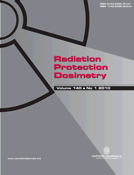-
Views
-
Cite
Cite
Carlos Ubeda, Eliseo Vano, Luciano Gonzalez, Patricia Miranda, Edith Valenzuela, Fernando Leyton, Carlos Oyarzun, Scatter and staff dose levels in paediatric interventional cardiology: a multicentre study, Radiation Protection Dosimetry, Volume 140, Issue 1, June 2010, Pages 67–74, https://doi.org/10.1093/rpd/ncq039
Close - Share Icon Share
Abstract
Interventional cardiology procedures usually imply high doses to the staff, as paediatric cardiologists need to stay closer to the patient than during adult procedures. Also, biplane systems are used that imply an additional source of staff doses. The objective of this paper is to measure scatter doses in four X-ray systems, using polymethyl methacrylate phantoms with thicknesses ranging from 4 to 16 cm to simulate paediatric patients, for the different acquisition modes. Scatter dose rates measured at the position of cardiologist's eyes ranged from 0.8 to 12 mSv h−1, and about twice the above values at lower extremities, as a linear function of the surface air kerma at the phantom, keeping the irradiated area constant. Therefore, the respective personal dose equivalent for the lens of the eyes may be around 0.5 and 1 mSv throughout the procedure, if additional protection is not used. Simultaneous cine acquisition in biplane systems yielded scatter doses to cardiologists, increased by factors from 5 to 21, compared with a single C-arm acquisition case and depending on geometry. Knowledge of scatter doses for different operation modes, patient thicknesses and the biplane operation should help paediatric cardiologists to adopt conservative attitudes in respect of their occupational radiation risks.



